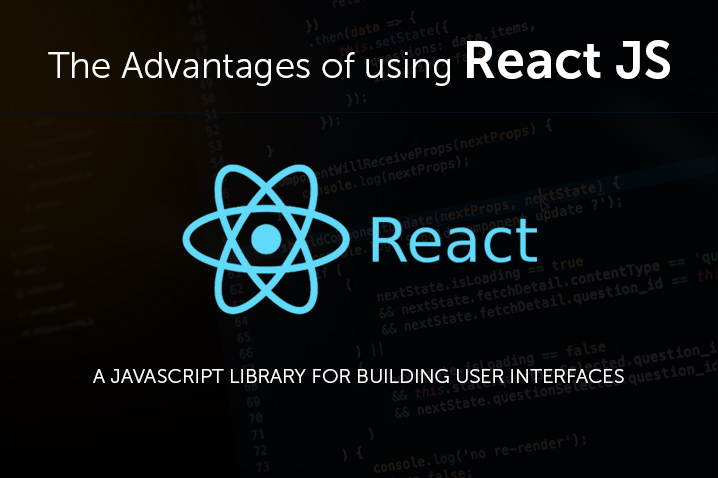
ReactJS, a popular JavaScript library for building user interfaces, offers several advantages that have contributed to its widespread adoption among developers. Here are some of the key advantages of ReactJS:
1. Component-based architecture: ReactJS follows a component-based approach, where the UI is divided into reusable and self-contained components. This modular structure promotes reusability, simplifies development, and makes code maintenance easier.
2. Virtual DOM (Document Object Model): ReactJS uses a virtual DOM, which is a lightweight copy of the actual DOM. When there are changes in the state or props of a component, ReactJS efficiently updates only the necessary parts of the virtual DOM, minimizing the number of actual DOM manipulations. This approach leads to improved performance and faster rendering of UI updates.
3. One-way data flow: ReactJS enforces a unidirectional data flow, where data changes occur in a single direction, from parent components to child components. This makes it easier to understand and debug the application's data flow, enhancing code predictability and maintainability.
4. JSX syntax: ReactJS incorporates JSX (JavaScript XML), a syntax extension that allows developers to write HTML-like code within JavaScript. JSX simplifies the creation of component templates and improves readability by keeping markup and logic closely integrated.
5. Rich ecosystem and community support: ReactJS benefits from a vast and active community of developers. This community-driven ecosystem offers a wide range of open-source libraries, tools, and reusable components, making it easier to extend and enhance React applications.
6. Code reusability: ReactJS promotes code reusability through its component-based architecture. Developers can create modular components and reuse them across different parts of an application, reducing redundant code and improving development efficiency.
7. Easy integration: ReactJS can be easily integrated into existing projects, even if they were initially built using different technologies or frameworks. React's flexible nature allows developers to adopt it incrementally, gradually migrating or introducing React components where needed.
8. Performance optimizations: ReactJS provides several performance optimization techniques, such as virtual DOM diffing, lazy loading, and code splitting. These optimizations help improve the speed and efficiency of React applications, resulting in a smooth user experience.
9. Mobile app development: React Native, a framework based on ReactJS, enables developers to build cross-platform mobile applications using JavaScript. By leveraging React's component model, developers can write code once and deploy it on both iOS and Android platforms, saving time and effort.
10. Strong community support and documentation: ReactJS has a robust community that actively contributes to its development and offers extensive documentation, tutorials, and resources. This support network helps developers find solutions, learn best practices, and stay up-to-date with the latest trends and advancements in React development.
These advantages have made ReactJS a popular choice for building user interfaces, whether for web applications or mobile apps and have contributed to its growth and success in the developer community.

No comments:
If you have some difficulties. Let me know